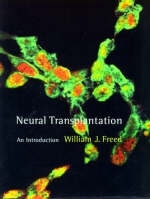
Neural Transplantation
An Introduction
Seiten
1999
MIT Press (Verlag)
978-0-262-06208-4 (ISBN)
MIT Press (Verlag)
978-0-262-06208-4 (ISBN)
- Titel ist leider vergriffen;
keine Neuauflage - Artikel merken
Discussing what may and what may not be possible in neural transplantation, this text covers the transplantation of particular cells to repair or augment specific neuronal systems, and the regeneration from injury, especially of the spinal cord.
Although there are many scientific and philosphical reasons to study the brain, for William J. Freed, "the most compelling reason to study the brain is to be able to repair the brains of individuals with nervous systems injury or disease". Advances in repairing the nervous system, as well as new data on brain development, growth and plasticity, have revolutionized the field of brain research and given rise to the technology of brain tissue transplantation. In this book Freed discussses what may and what may not be possible. The book covers two aspects of neural tissue transplantation research. One involved the transplantation of particular cells to repair or augment specific neuronal systems. This technique could be useful for such conditions as Parkinson's disease, Huntington's disease, chronic pain and epilepsy. The other line of research concerns regeneration from injury, especially of the spinal cord. After providing basic background on transplantation, brain structure and development, the book discusses Parkinson's disease, the use of transplants to influence localized brain functions, circuit reconstruction and genetic engineering and other future technologies.
Although there are many scientific and philosphical reasons to study the brain, for William J. Freed, "the most compelling reason to study the brain is to be able to repair the brains of individuals with nervous systems injury or disease". Advances in repairing the nervous system, as well as new data on brain development, growth and plasticity, have revolutionized the field of brain research and given rise to the technology of brain tissue transplantation. In this book Freed discussses what may and what may not be possible. The book covers two aspects of neural tissue transplantation research. One involved the transplantation of particular cells to repair or augment specific neuronal systems. This technique could be useful for such conditions as Parkinson's disease, Huntington's disease, chronic pain and epilepsy. The other line of research concerns regeneration from injury, especially of the spinal cord. After providing basic background on transplantation, brain structure and development, the book discusses Parkinson's disease, the use of transplants to influence localized brain functions, circuit reconstruction and genetic engineering and other future technologies.
| Erscheint lt. Verlag | 1.2.2000 |
|---|---|
| Reihe/Serie | Cellular and Molecular Neuroscience |
| Zusatzinfo | 70 |
| Verlagsort | Cambridge, Mass. |
| Sprache | englisch |
| Maße | 160 x 235 mm |
| Gewicht | 1044 g |
| Themenwelt | Medizinische Fachgebiete ► Chirurgie ► Neurochirurgie |
| Naturwissenschaften ► Biologie ► Humanbiologie | |
| Naturwissenschaften ► Biologie ► Zoologie | |
| ISBN-10 | 0-262-06208-9 / 0262062089 |
| ISBN-13 | 978-0-262-06208-4 / 9780262062084 |
| Zustand | Neuware |
| Informationen gemäß Produktsicherheitsverordnung (GPSR) | |
| Haben Sie eine Frage zum Produkt? |
Mehr entdecken
aus dem Bereich
aus dem Bereich
Buch | Hardcover (2024)
De Gruyter (Verlag)
CHF 153,90
850 Fakten für die Zusatzbezeichnung
Buch | Softcover (2022)
Springer (Verlag)
CHF 65,80


